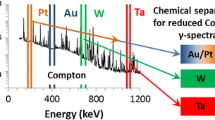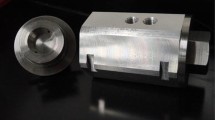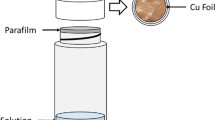Abstract
Fission fragments from heavy ion induced fission were stopped in thin magnesium foils. A fast procedure based on evolution of stibine was developed to separate the antimony isotopes embedded in the foil. A separation system, and a glass pressure filtration system was constructed for this purpose. The chemical yield measured by three independent methods was 80–90%. The degree of decontamination from other fission products was >102. The whole separation took eight minutes.
Similar content being viewed by others
References
W. J. Maeck, The Radiochemistry of Antimony, National Academy of Sciences, USAEC-NAS-NS 3033, 1961.
G. Herrmann, H. O. Denschlag,Ann. Rev. Nucl. Sci., 19 (1969) 1.
L. C. Northcliffe, R. F. Schilling, Nuclear Data Table 7A (3–4), 1970.
T. D. Thomas,Ann. Rev. Nucl. Sci., 18 (1968) 343.
J. G. Cunningham, AERE-R 5587, 1967.
K. F. Flynn, L. E. Glendenin, E. P. Steinberg, Ref. 1, p. 36.
Author information
Authors and Affiliations
Rights and permissions
About this article
Cite this article
Ahmed, A.K., Newton, G.W.A. & Robinson, V.J. A fast separation for antimony produced in heavy-ion induced fission. J. Radioanal. Chem. 13, 135–139 (1973). https://doi.org/10.1007/BF02514116
Received:
Issue Date:
DOI: https://doi.org/10.1007/BF02514116




